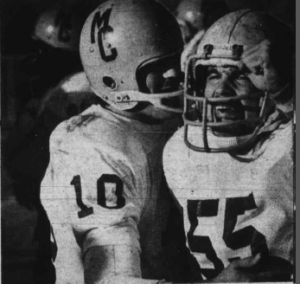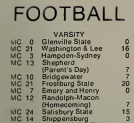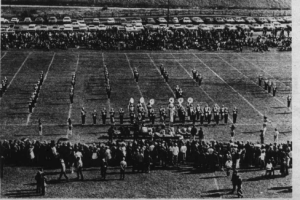Post Author: Jonathan Frame

Going into the season, no one really knew what to expect; the team had come off a fairly successful season in their first varsity year, had put enough fear into opposing teams that they did not even want to face Madison, and coming into the season, the team will get to play in a stadium that was just completed with stands. From a team that had recruited students out of the registration line just three years before that, had completely changed the momentum of the program and had an undefeated season in 1975 (JMU Football, Starling). One of the coaches going into the season had said that the team was good enough to go undefeated, but few thought that it would actually happen. Coach Challice McMillan had put it best when he said that they did in the final game that they had done all season, “play well enough to win.” With that alone, it is easy to tell that it may not have been the prettiest of seasons, but was just the beginning to what they were trying to accomplish (Starling).

It had already been known that the football team was made in order to help create a coeducational institute, something that was new to the college at the time. The hope was to attract men to Madison, and with the success that the football team was starting to have, it just made the school that much more appetizing for prospective men. Signs of the plan working was already evident when Coach McMillan had over 100 players tryout for the 1974 season, but even though the team was already having great success, the administration was still not content with where the football team was placed (“110 men tryout”). When the team traveled to William and Mary and played their football team and played them strong to the point that President Carrier came out and said that Madison needed to play schools like this more often, “we need to move to Division I.” (JMU Football)

It would only take this one time against a Division I school to satisfy the idea that Madison was good enough to play at the next level. The school would go to the NCAA and ask them to reclassify them, and would ask to start out at Division II and then follow up the next year to Division I (JMU Football). This was asking of a lot, especially when the team had not existed for that long; it even got to the point that one of the men at the NCAA even asked if they thought the school was going to fast, and Ehlers said just to worry about themselves, and Madison would do what they needed to do (JMU Football). Madison football would get to Division I just like they had hoped, and in the President’s mind had done much more than that. He thought the University had finally gotten to the point where they thought they were equal to the other colleges around them; they thought they could now at the same level of schools like William and Mary, Richmond, and even University of Virginia in some respects (JMU Football) . Although there were things left to do, President Carrier was happy with where the school was going, and he felt like a lot of it was due to what the football team had created (JMU Football).

Citations:
Dennis Smith, “The Dukes Move to Division I Football: What are the Implications? The Possibilities are Overwhelming” The Breeze, December 8, 1978.”It Feels Great… It Feels Tremendous,” The Breeze, November 21, 1975.
James Madison University. “Bluestone 1976.” Archive.org. http://archive.org/stream/bluestone197668jame#page/n3/mode/2up (accessed January 17,2013).
JMU Football-40th Season Series, Part 2 of 5, April 18, 2013 (originally aired in 2011).
Wade Starling, “Dukes Finished Season Undefeated,” The Breeze, November 21, 1975
“110 Men Try-out for ’74 Football Squad,” The Breeze, September 3, 1974.
